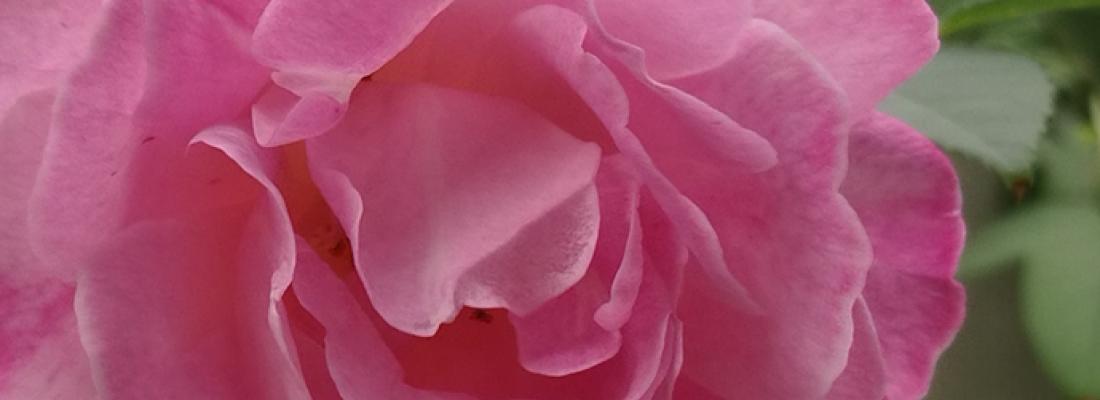Agroecology Reading time 4 min
The rose genome deciphered: from the origin of modern roses to the characteristics of their blooms
Published on 30 April 2018

Celebrated since Antiquity by numerous artists, appreciated for its perfume and the beauty of its blooms, the rose is today the most widely purchased cut flower worldwide, and an essential ornamental plant of our gardens and balconies.
Thanks to an international consortium1 involving INRA, ENS de Lyon, CEA, CNRS and Claude Bernard Lyon 1 University, the genome of the rose has now been deciphered; an essential step towards understanding its biology and the origin of its diversity.
A high-quality reference genome that sheds light on the evolution of the Rosaceae family
Many years of effort, combined with the most innovative strategies and tools, enabled the authors to sequence and decipher the genetic information carried by the seven chromosome pairs of Rosa chinensis ‘Old Blush’ and to annotate all its 36,377 genes.
Comparison of this reference genome of the Rosa genus with those of other plants in the Rosaceae family (strawberry, raspberry, apple, pear, peach, plum, etc.) showed that rose, strawberry and raspberry are evolutionarily very close, and enabled a reconstitution of the history of the rose within the Rosaceae family.
The origins of modern roses explained
The scientists studied the origin of the chromosomes in the hybrid rose ‘La France’ obtained in Lyon in 1867. This hybrid combines the vigorous growth of European species with the recurrent blooming of those from China. To achieve this, the authors projected onto the reference genome, the genomic data of rose varieties originating from Europe, the Middle East and China, which contributed to rose domestication. They identified the origin of the genes implicated in defining the most appreciated traits of modern roses, such as recurrent blooming, which is mainly of Chinese origin.
Blooming, perfume and colour: genes identified and biosynthetic pathways reconstructed
The work also identified the genes involved in blooming, flower development, reproduction, as well as in fragrance and pigment (anthocyanin family) biosynthesis. In particular, they highlighted a group of genes involved simultaneously in the regulation of the colour and fragrance of flowers.
This work provides solid foundations to untangle the molecular and genetic mechanisms which govern the roses' traits and their diversity and ultimately will contribute to accelerate the breeding and improve the quality of this queen of flowers. This knowledge will also be of considerable value when studying other species in the Rosaceae family and other ornamental plants.
The scientists chose to study Rosa chinensis ’Old Blush’, originating from China and one of the important ancestors of the modern rose varieties that bloom several times each year. In the rose, important differences between the chromosomal sequences inherited from the two parents complicate the identification/assembly of genomic fragments obtained by sequencing robots. The scientists therefore combined two approaches:
- A cell culture strategy to obtain a rose with a genome in which each gene comes from a single parent;
- A high-throughput sequencing strategy using one of the most recent robots (PacBio type) which generates sequences that are much longer than those produced by previous technologies, thus facilitating their assembly and the reconstitution of chromosomes.
1 UMR Reproduction et développement des plantes (INRA, CNRS, ENS de Lyon, Univ. Claude Bernard Lyon 1); Laboratoire des Interactions plantes-microorganismes (INRA, CNRS); UMR Biométrie et biologie évolutive (Univ. Claude Bernard Lyon 1, CNRS); UMR Ecologie des hydrosystèmes naturels et anthropisés (Univ. Claude Bernard Lyon 1, ENTPE, CNRS, INRA); Institut des Sciences des plantes de Paris-Saclay (CNRS, Univ. Paris-Sud, INRA, Univ. Evry, Univ. Paris-Diderot); le Genoscope, CEA; le Laboratoire de Biotechnologies végétales appliquées aux plantes aromatiques et médicinales (Univ. Jean Monnet, CNRS); l’UR Genomique-Info, INRA; UMR Génétique, diversité et écophysiologie des céréales (INRA, Univ. Clermont-Auvergne); Institut méditerranéen de la biodiversité et d'écologie marine et continentale (Univ. Aix Marseille, CNRS, IRD, Univ. Avignon et Pays du Vaucluse); Institut de Biologie moléculaire des plantes, CNRS; Key Laboratory of Horticultural Plant Biology (Huazhong Agricultural University, China); Institute of Vegetables and Flowers (CAAS, China); The Center for Plant Molecular Biology (Univ. Tübingen, Germany).
| Références The Rosa genome provides new insights into the domestication of modern roses. Nature Genetics 2018, https://doi.org/10.1038/s41588-018-0110-3 |
